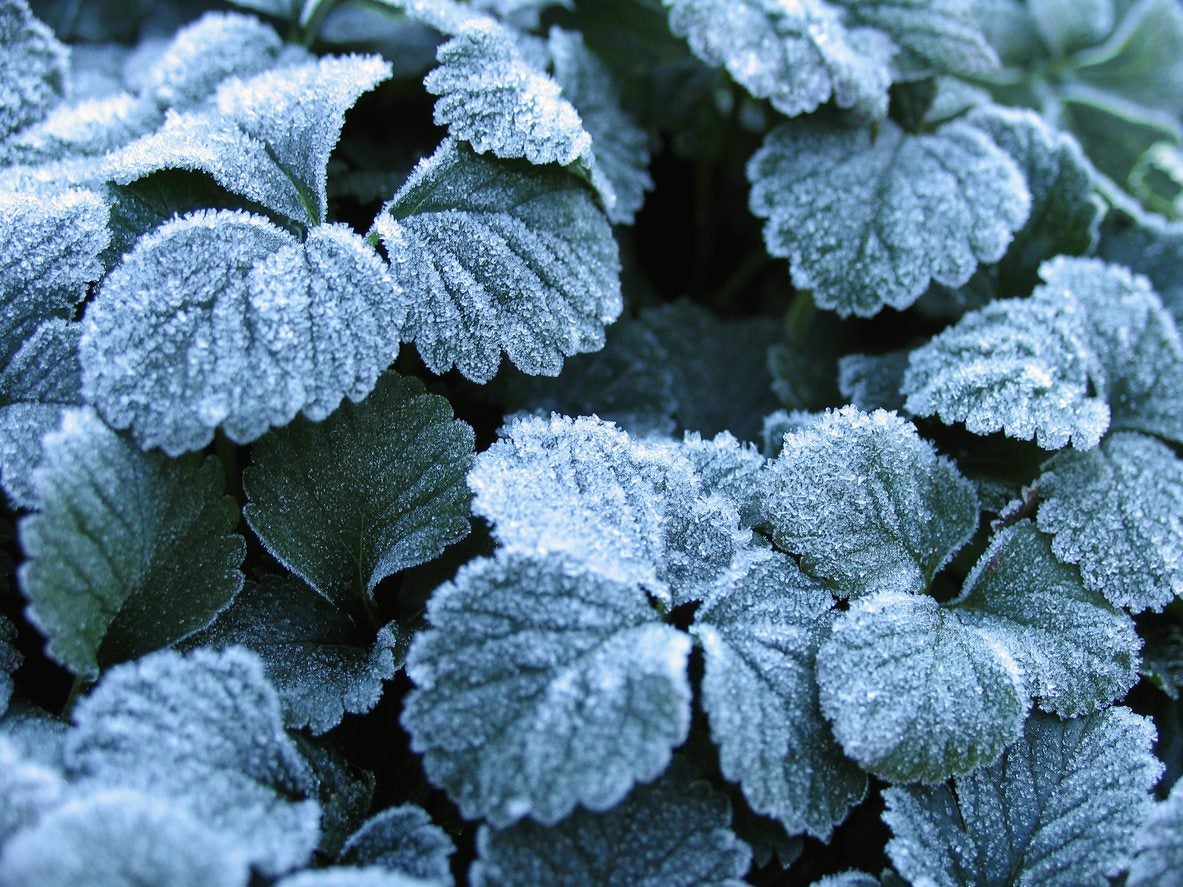Strawberry Plants And Frost: How Do You Protect Strawberry Plants In Cold

Strawberries are one of the first crops to make their appearance in spring. Because they are such early birds, frost damage on strawberries is a very real threat. Strawberry plants and frost are fine when the plant is dormant during the winter, but a sudden spring frost when the plants are blooming can wreak havoc on the berry patch. Protecting strawberry plants from frost is of paramount importance, but HOW do you protect strawberry plants?
Strawberry Plants and Frost
Frost can decimate an entire berry crop, especially if the berries have been exposed to warming temperatures. A freeze following warm spring weather can be devastating. And strawberries are particularly susceptible to frost damage since they are often in bloom before the last frost free date. Strawberry blossoms are most sensitive to frost right before and during opening. At this juncture, temperatures below 28 F. (-2 C.) will damage the blossoms, so some frost protection of strawberries is integral to the harvest. Frost protection of strawberries is less important when the flowers are still in tight clusters and just barely peaking from the crown; at this point they will tolerate temps as low as 22 F. (-6 C.). Once fruit begins to develop, temperatures below 26 F. (-3 C.) may be tolerated for very short periods, but the longer the freeze, the higher risk of injury. So, again, it’s important to be prepared to protect the plants from frost.
How Do You Protect Strawberry Plants from Frost?
Commercial farmers do a couple of things to protect the berries from frost and so can you. To protect them from winter temps, mulch over the strawberries in the fall to early winter with straw or pine needles. In the spring, move the mulch between the plants after the last frost. This will help retain soil moisture, retard weeds, and prevent dirty irrigation water from splashing on the fruit. Overhead irrigation is another popular method for protecting strawberries plants from frost. It sounds crazy, but it works. Basically, the farmers are encasing their entire field in ice. The temperature of the ice remains at 32 F. (0 C.) because as the water becomes ice it releases heat. Since strawberries aren’t injured until the temperature falls below 28 F. (-2 C.), the berries are saved from frost injury. The water must be constantly applied to the plants, though. Too little water can cause more damage than if no water is applied at all. Another interesting fact on protecting strawberries from frost is that soil retains heat during the day and is then released at night. Wet, thus dark soil, retains heat better than dry, light colored soil. So a wet bed serves yet another purpose. Also, row covers can provide some protection. The temperature under a cover may equal that of the air, but this takes a while and may just buy the berries enough time. Water can also be applied directly over the row cover to protect the flowers inside with a layer of ice. Where your berries are located can also provide them with some protection. Our strawberry patch is on the south side of a garage with a significant overhanging eave, which serves to protect the berries.
Sign up for the Gardening Know How newsletter today and receive a free copy of our e-book "How to Grow Delicious Tomatoes".

Amy Grant has been gardening for 30 years and writing for 15. A professional chef and caterer, Amy's area of expertise is culinary gardening.
